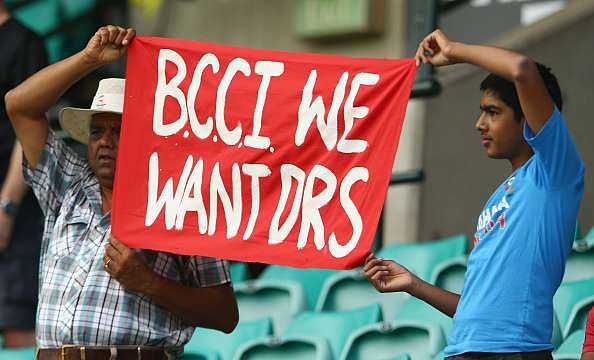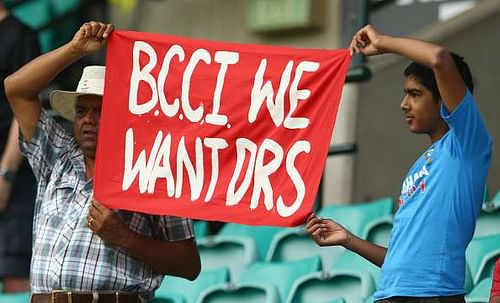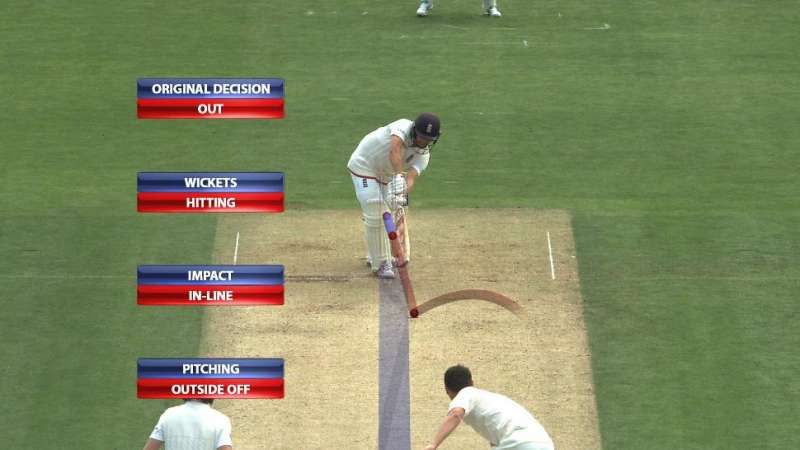
DRS: What made BCCI give it a go ahead?
The Decision Review System (DRS) was first implemented by the International Cricket Council (ICC) during the India-Sri Lanka Test series in 2008. India was at the rough end of the DRS in that series, with a bunch of controversial decisions going against them, and only one going in their favour. After that series, most of the senior Indian players that went on the Sri Lanka tour such as Sachin Tendulkar, Anil Kumble and MS Dhoni, sounded their apprehension over the accuracy of the DRS.
Since that day, the Board of Control of Cricket in India (BCCI) had distanced itself from the DRS, not using it for India’s fixtures, even though every other cricket board has implemented the system. The BCCI had constantly maintained the stance that the ‘ball-tracking technology’ in DRS is not fool-proof.
Although the ICC often had tried to convince the BCCI on using the DRS, BCCI had been rigid in their stance, and not given in to the system. This had been the case especially under Dhoni’s captaincy, who once equated the DRS with a ‘life-jacked that does not come with a guarantee’.
But today, the BCCI announced the DRS will be used during the Test series against England, albeit on trial basis. ICC General Manager Geoff Allardice recently made a presentation in the presence of India’s head coach Anil Kumble and the top brass of the BCCI. The presentation discussed the upgradations made in the system, which was instrumental in BCCI eventually deciding to use the system.
So what are the upgradations that have been bought in the DRS, which made BCCI give it a go ahead?
For that, we need to understand how the DRS works. To make a decision, DRS uses three different technologies. It uses the hawk-eye to predict the path of a delivery after it hits the pad, it uses the snicko-meter for audio evidence, as well as the hot-spot for detection of inside edges.
BCCI’s primary concern had been with the hawk-eye, which they believed had a high-error rate. In the previous version of the hawk-eye, an error could occur through two possible factors. Firstly, it could be due to the inaccuracy in the predicted path of the ball after it hit the pad, and secondly, it could be due to faulty detection of the point of impact on the pad, which till now, was done manually.
This could also often lead to incorrect decisions whenever the ball made a second touch, since the predicted trajectory of the ball could be miscalculated in those cases.
But in the improved system, the ball’s path after it hits the pad will be accurately identified using the ultra-motion camera. Secondly, the manual intervention in determining the point of impact will be minimised by the introduction of Ultra Edge, which according to BCCI has been approved by Massachusetts Institute of Technology [MIT].
According to a BCCI release, "Earlier, there was a possibility that the operator would have missed a delivery and hence an lbw appeal could have been missed. Now, Hawkeye has developed the technology to record and save all images so that in case an operator fails to arm the tracking system, the images can be rewound and replayed."
Apart from major issues with the hawk-eye, BCCI was also concerned with the hot-spot, arguing that it did not detect edges in certain cases, such as when bowlers applied vaseline on the ball. This was the case during India’s tour of England in 2011, when Rahul Dravid fell victim to hot-spots inability to detect an edge on three occasions. Another controversy erupted in that tour when former England captain Michael Vaughan alleged that VVS Laxman possibly used Vaseline on the edge of his bat to avoid detection by the technology.
In the upgraded system, the ‘hot spot’ will not be used to detect the edges, but rather DRS will take use of the MIT approved Ultra Edge. Infact, Kumble who is also the head of the ICC cricket committee, had even made a visit to the MIT before taking up the role of India’s coach, and he was enlightened about the improvements in the DRS. Even current Test skipper, Virat Kohli has been keen on the DRS, since he took over the captaincy role, unlike previous captain Dhoni.

